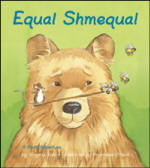
Owl Moon by Jane Yolen
Published by Scholastic: 1987
Picture Book
1988 Caldecott Medal Winner
Summary:
A young girl is exciting to go on her first owling trip with her dad. She has heard stories from her older brothers about the outing and knows that must be followed when it is finally her turn to go along. She heads into the woods with her dad. They stop and her dad calls for an owl – no response. It is cold out, but the little girls keeps going, hope and excitement driving her. They come to a clearing and her dad calls out again. This time a response and before she knows it she is looking at a large beautiful evening. The owl leaves and so do they, walking home under the light of the owl moon.
Response:
I really enjoyed this story. There was something very simple about it that really appealed to me. The physical structure of the words initially threw me off, but soon enough I caught on. I often pictured myself as a little girl trudging through the snow following my dad on an adventure. The little girl’s message of hope created a very heart warming feeling inside of me.
For the Reader:
I would recommend this book for all ages. The younger readers may not be able to read the story for themselves, but it would still be a wonderful story to read to them.










